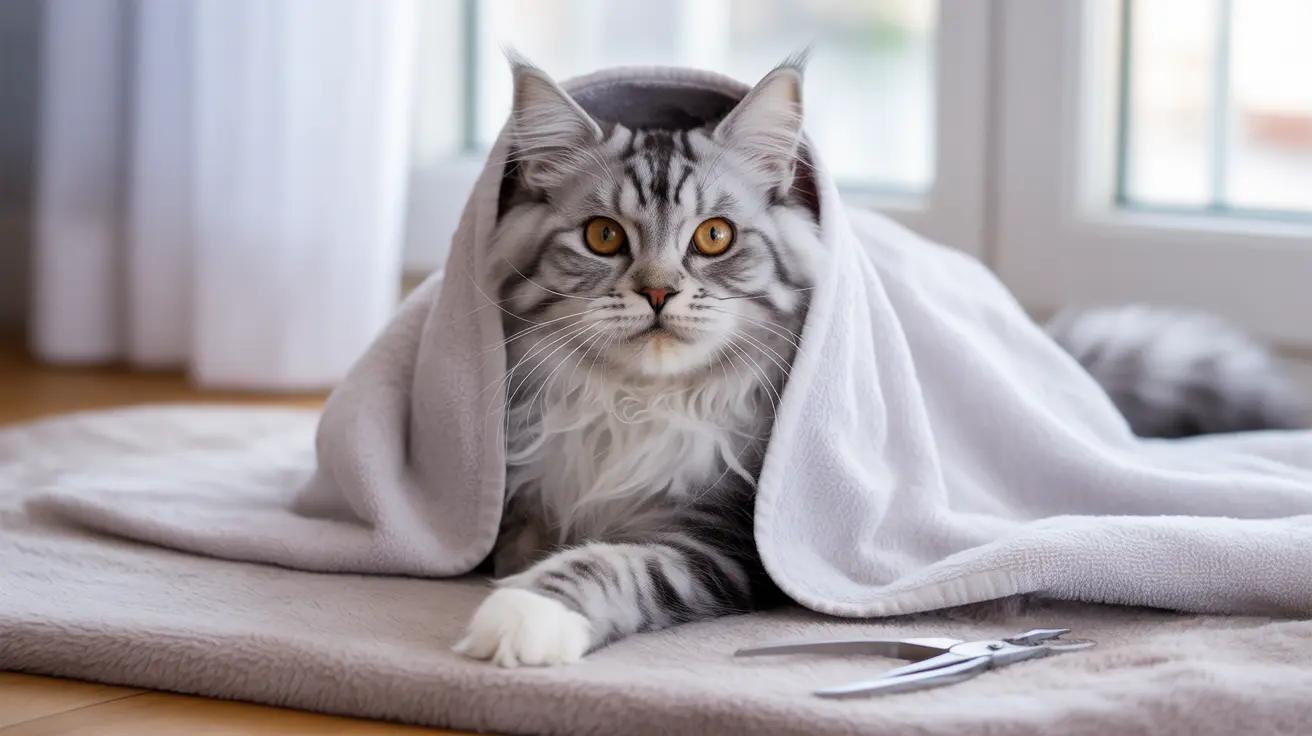Understanding Why Cats Resist Claw Trimming
Most cats become defensive about claw trimming due to past negative experiences, fear of restraint, or general anxiety about having their paws handled. This natural defensive response can manifest as hissing, scratching, or biting. Understanding these triggers is the first step toward creating a more positive nail-trimming experience.
Essential Preparation Steps
Creating the Right Environment
Before attempting to trim your angry cat's claws, set up a calm, quiet space away from other pets and distractions. Consider using feline pheromone diffusers 30 minutes before the session to help reduce anxiety. Have all your supplies within easy reach:
- Cat-specific nail clippers
- Styptic powder or cornstarch
- Thick towel for wrapping
- High-value treats
- LED light (for dark claws)
Choosing the Right Timing
Select a time when your cat is naturally more relaxed, such as after a meal or during their usual nap time. Avoid attempting nail trims when your cat is already agitated or particularly energetic.
Safe Restraint Techniques
The Towel Wrap Method
The "kitty burrito" technique is often most effective for angry cats:
- Lay a thick towel flat on a stable surface
- Place your cat in the center
- Wrap the towel around their body, leaving only the head and one paw exposed
- Ensure the wrap is snug but not tight enough to cause distress
Two-Person Approach
Having an assistant can significantly increase your chances of success. One person can focus on gentle restraint and comfort while the other handles the actual trimming.
The Trimming Process
Identifying the Quick
Locate the pink quick (blood vessel) within each claw. Only trim the white portion beyond this point. For dark claws, use an LED light behind the nail to illuminate the quick.
Safe Cutting Technique
Make quick, confident cuts at a 45-degree angle, taking off small amounts at a time. If your cat becomes agitated, stop immediately and try again later. It's perfectly acceptable to trim just a few claws per session.
Handling Emergencies
If you accidentally cut the quick:
- Remain calm to avoid frightening your cat further
- Apply styptic powder immediately to stop bleeding
- Keep pressure on the affected nail for 30 seconds
- Monitor the area for signs of infection
Building Positive Associations
Transform nail trimming from a dreaded task to a more tolerable experience:
- Offer treats during and after successful trimming sessions
- Practice touching paws without trimming to build trust
- Use praise and gentle petting as rewards
- Consider clicker training for positive reinforcement
Frequently Asked Questions
How can I safely trim the claws of an angry or aggressive cat without causing stress or injury?
Use the towel wrap method, work in short sessions, and always have treats ready. Never force a trim when your cat is highly agitated, and consider working with a professional if needed.
What are the best restraint techniques for handling a difficult or resisting cat during nail trimming?
The "kitty burrito" towel wrap is most effective, combined with a two-person approach. One person gently restrains while the other trims. Always maintain firm but gentle control.
How do I avoid cutting the quick when trimming my cat's claws, especially if my cat has black nails?
Use an LED light behind dark nails to illuminate the quick. Only trim the white tip, and cut small amounts at a time. When in doubt, trim less rather than risk cutting too close.
What should I do if I accidentally cut my cat's quick and it starts bleeding during a nail trim?
Apply styptic powder or cornstarch immediately, maintain pressure for 30 seconds, and monitor the area. If bleeding persists beyond a few minutes, contact your veterinarian.
How can I help my cat become more tolerant and less aggressive toward regular claw trimming?
Start with positive reinforcement training, regularly handle paws without trimming, use high-value treats, and work in short sessions. Consistency and patience are key to building tolerance over time.
Conclusion
Successfully trimming an angry cat's claws requires patience, preparation, and the right techniques. Remember that it's okay to progress slowly and seek professional help if needed. With consistent positive experiences and proper handling, many cats can learn to better tolerate regular nail maintenance.






